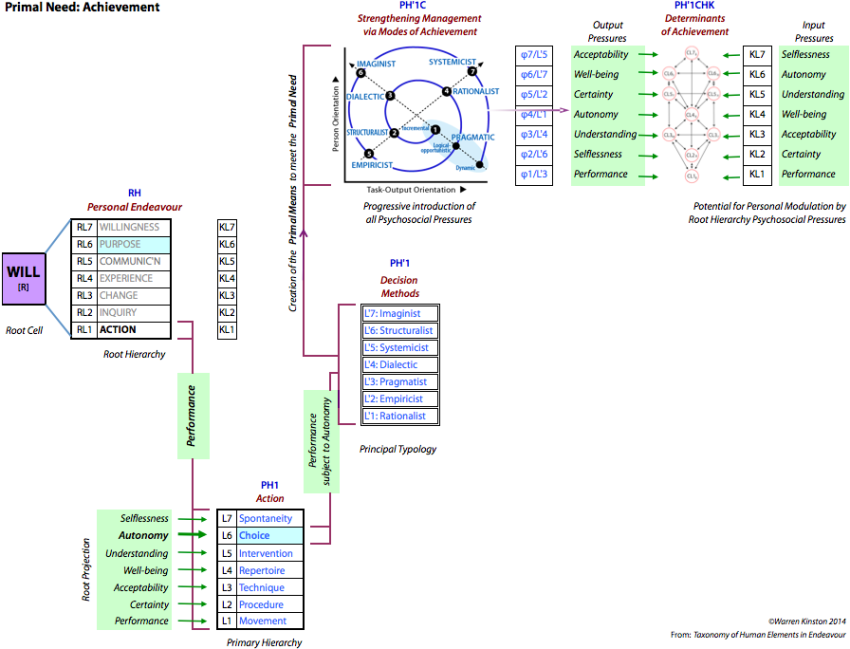Determinants of Achievement: PH'1CHK
Note: Detailed properties of Spirals and their Trees are or will be worked out in the Frameworks sections of this website. This topic is focused on the architecture and specifically on the contribution of psychosocial pressures to meeting our Primal Needs.
Reaching this Point
Here is a summary of material that has been developed and explained in earlier Topics in this section and elsewhere. It is the basis for appreciating the explained and shown below.
Better viewing: Use browser zoom if needed.

![]() Summary of the PH'1 Control Diagram
Summary of the PH'1 Control Diagram
Management for «Achievement»
It is proposed that an inherent biology-based rationale for is achievement. All individuals can achieve by making intuitively and haphazardly. But the resource and time constraints intrinsic to important or large-scale achievement invariably activates specialized ().
The Primal Means for achievement is management. This is available to a person or an informal group, but is especially needed by formal organizations (whence the notion of management culture).
No single guarantees desired achievement, nor does management. Nothing guarantees continuous successful achievement. Too many factors and unforeseen events may intervene.
The more that are included, the stronger management can be, but incorporating takes time and follows a necessary order as explained in the framework posted here.

Regardless of the strength of management, achievement will always be determined by the use of the essences.
The inexorable passage of time and resource use is represented in the by its base in the Primal Nexus. Here, performance pressure orients management (KL1) and performance pressure is also evident in the management output ().
The intrinsic lack of certainty about successful achievement noted above raises concerns in management. That is why management, once the Nexus is secure, moves its orientation from to , which can provide a degree of certainty.
In the , the interaction of actualization and transcendence is dramatic.
Given attention to the Primal Nexus, the lower part involving requires:
-
use of actualizing pressures—in orienting management input to the handling of action
i.e. KL2-certainty (in use of accountability), KL3-acceptability (of emergent conflicts), KL4-well-being (in choice of values and objectives);but
- use of transcending pressures—in producing the management output that brings action under control
i.e. -selflessness (in requiring accountability for all work from all involved), -understanding (in resolution of conflicts via dialogue), -autonomy (in determining values and objectives).
while the upper part involving requires:
-
use of transcending pressures—in orienting management input to enhance certainty.
i.e. KL5-understanding (of needed data and information), KL6-autonomy (for aspirations), KL7-selflessness (in noticing dynamic interactions);but
- use of actualizing pressures—in producing the management output so that it enables and constrains lower levels in a way that generates certainty
i.e. -certainty (in obtaining data and information), -well-being (in identifying aspirations),-acceptability (in modeling co-evolutionary processes).
This framework has numerous implications for the handling of management, especially in large organizations.
- Now consider Determinants of Knowledge (PH'2CHK).
Initially posted: 30-Nov-2013. Last amended 5-Jan-2023